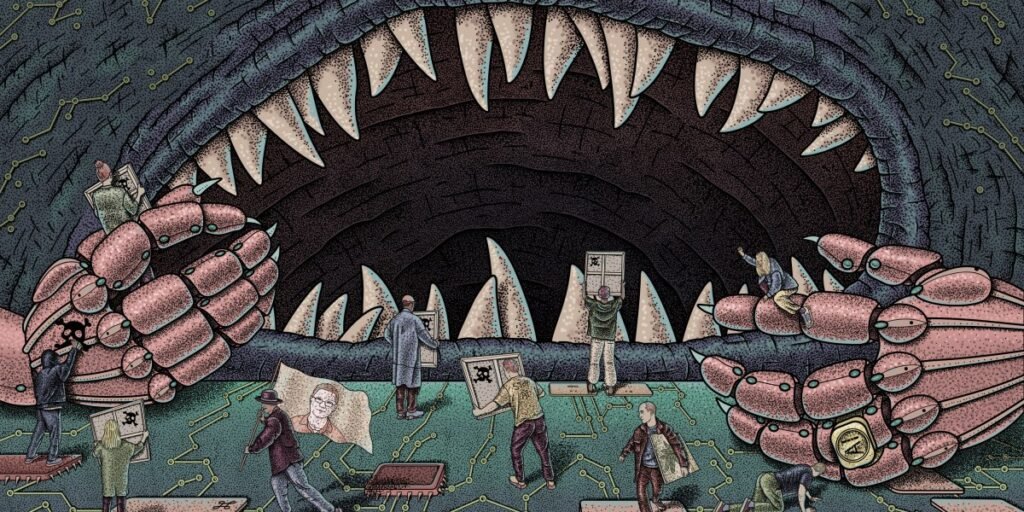But it’s “simplistic to assume that when you have an actual safety downside within the wild and also you’re making an attempt to design a safety instrument, the reply ought to be it both works completely or don’t deploy it,” Zhao says, citing spam filters and firewalls as examples. Protection is a continuing cat-and-mouse recreation. And he believes most artists are savvy sufficient to grasp the chance.
Providing hope
The combat between creators and AI corporations is fierce. The present paradigm in AI is to construct larger and greater fashions, and there may be, no less than at present, no getting round the truth that they require huge knowledge units hoovered from the web to coach on. Tech corporations argue that something on the general public web is truthful recreation, and that it’s “impossible” to build advanced AI tools with out copyrighted materials; many artists argue that tech corporations have stolen their mental property and violated copyright legislation, and that they want methods to maintain their particular person works out of the fashions—or no less than obtain correct credit score and compensation for his or her use.
To date, the creatives aren’t precisely profitable. Various corporations have already replaced designers, copywriters, and illustrators with AI programs. In a single high-profile case, Marvel Studios used AI-generated imagery as an alternative of human-created artwork within the title sequence of its 2023 TV collection Secret Invasion. In one other, a radio station fired its human presenters and changed them with AI. The know-how has change into a serious bone of rivalry between unions and movie, TV, and inventive studios, most just lately resulting in a strike by video-game performers. There are quite a few ongoing lawsuits by artists, writers, publishers, and document labels towards AI corporations. It’ll doubtless take years till there’s a clear-cut authorized decision. However even a court docket ruling gained’t essentially untangle the troublesome moral questions created by generative AI. Any future authorities regulation will not be more likely to both, if it ever materializes.
That’s why Zhao and Zheng see Glaze and Nightshade as obligatory interventions—instruments to defend unique work, assault those that would assist themselves to it, and, on the very least, purchase artists a while. Having an ideal resolution will not be actually the purpose. The researchers want to supply one thing now as a result of the AI sector strikes at breakneck pace, Zheng says, implies that corporations are ignoring very actual harms to people. “That is in all probability the primary time in our complete know-how careers that we truly see this a lot battle,” she provides.
On a a lot grander scale, she and Zhao inform me they hope that Glaze and Nightshade will finally have the ability to overtake how AI corporations use artwork and the way their merchandise produce it. It’s eye-wateringly costly to coach AI fashions, and it’s extraordinarily laborious for engineers to seek out and purge poisoned samples in an information set of billions of photographs. Theoretically, if there are sufficient Nightshaded photographs on the web and tech corporations see their fashions breaking in consequence, it may push builders to the negotiating desk to discount over licensing and truthful compensation.
That’s, in fact, nonetheless a giant “if.” MIT Know-how Overview reached out to a number of AI corporations, corresponding to Midjourney and Stability AI, which didn’t reply to requests for remark. A spokesperson for OpenAI, in the meantime, didn’t affirm any particulars about encountering knowledge poison however mentioned the corporate takes the security of its merchandise critically and is frequently enhancing its security measures: “We’re all the time engaged on how we are able to make our programs extra strong towards this kind of abuse.”
Within the meantime, the SAND Lab is shifting forward and looking out into funding from foundations and nonprofits to maintain the mission going. In addition they say there has additionally been curiosity from main corporations trying to shield their mental property (although they refuse to say which), and Zhao and Zheng are exploring how the instruments could possibly be utilized in different industries, corresponding to gaming, movies, or music. Within the meantime, they plan to maintain updating Glaze and Nightshade to be as strong as doable, working intently with the scholars within the Chicago lab—the place, on one other wall, hangs Toorenent’s Belladonna. The portray has a heart-shaped word caught to the underside proper nook: “Thanks! You may have given hope to us artists.”
This story has been up to date with the most recent obtain figures for Glaze and Nightshade.

